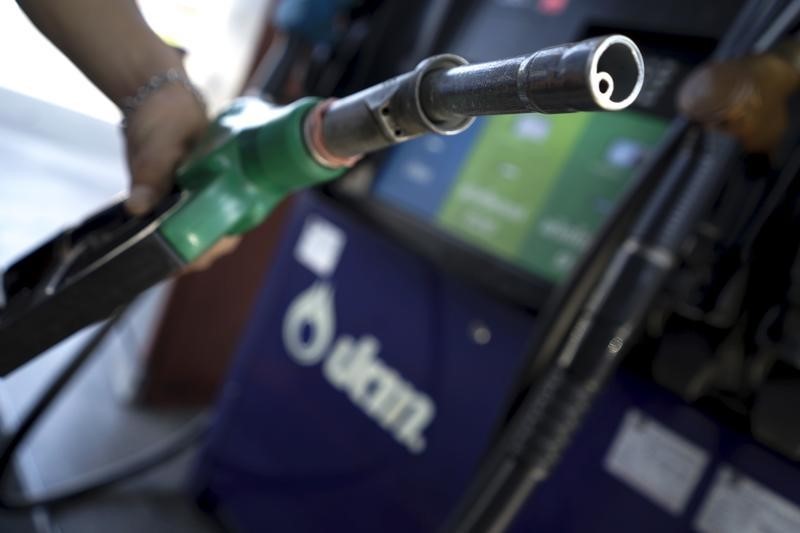Oil hit by dollar resurgence; Sharpest fall in a month
2023.04.17 16:53

© Reuters.
By Barani Krishnan
Investing.com — The is making a comeback, much to the chagrin of oil bulls.
Crude benchmarks West Texas Intermediate and Brent both fell about 2% on Monday, their most in a month, as the U.S. currency extended its rebound from last week’s one-year lows on expectations that the Federal Reserve will agree on another at its May 3 rate decision.
New York-traded settled down $1.69, or 2.1%, at $80.83 a barrel, after a session low at $80.47. Its sharpest fall prior to this was exactly a month ago on March 17, when it fell 2.4%. On a weekly basis, the U.S. crude benchmark had risen non-stop over four previous weeks, climbing from a settlement at near 15-month lows of $66.74 during the week ended March 10 to finish at $82.52 last week after deeper production cuts announced by OPEC at the start of this month.
Despite its recent bull streak, WTI needs to hold above the 50-week Exponential Moving Average of $82.80 to avoid risking further downside, said chartist Sunil Kumar Dixit.
“A sustained break below this zone will eventually extend the decline towards $79.50 and $78.50, followed by an acceleration towards $77.50,” said Dixit, who’s chief technical strategist at SKCharting.com.
London-traded , the global benchmark for crude, settled down $1.55, or 1.8%, at $84.76. Like WTI, Brent had rallied in four previous weeks, advancing from a close near 15-month lows at $74.99 during the week ended March 10 to finish at $86.31 last week.
“Expectations that the Fed is not done after all with its rate hikes has given the dollar fresh upside and that’s weighing on the four-week rally in oil,” said John Kilduff, founding partner at New York energy hedge fund Again Capital.
The Fed has added 475 basis points to rates over the past 13 months, taking them to a peak of 5% from the 0.25% level they were at during the start of COVID-19 outbreak in March 2020.
In the next few days, investors will have a final chance to hear from Fed officials before they enter their traditional blackout period ahead of the May 3 rate decision, including New York Fed President John , Governor Michelle , Governor Lisa and Governor Christopher .
Waller, one of the Fed’s biggest policy hawks, raised the ante on higher rates when he made no secret last week of his desire for further monetary tightening.
Waller’s call helped trigger a mini-crash in prices of gold, which until Thursday had seemed to be on track to a new record peak. Higher interest rates tend to benefit the dollar and weigh on international demand for commodities priced in the currency.
wasn’t the only commodity that took a hit from Waller’s remarks on Friday. The dollar’s rebound from a one-year low also led crude to settle with just a modest advance instead of what might have been larger gains, after global energy agency IEA upgraded oil’s demand prospects in 2023.
The dollar aside, top importer China is to release a flurry of economic data on Tuesday, including reports on first quarter , March and , with market participants hoping for more clarity on the uneven recovery in the world’s second largest economy.








